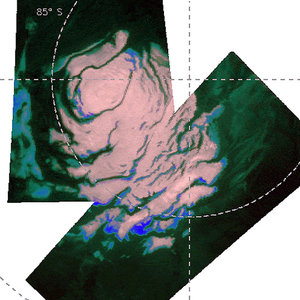Accept all cookies Accept only essential cookies See our Cookie Notice

About ESA
The European Space Agency (ESA) is Europe’s gateway to space. Its mission is to shape the development of Europe’s space capability and ensure that investment in space continues to deliver benefits to the citizens of Europe and the world.
Highlights
ESA - United space in Europe
This is ESA ESA facts Member States & Cooperating States Funding Director General Top management For Member State Delegations European vision European Space Policy ESA & EU Space Councils Responsibility & Sustainability Annual Report Calendar of meetings Corporate newsEstablishments & sites
ESA Headquarters ESA ESTEC ESA ESOC ESA ESRIN ESA EAC ESA ESAC Europe's Spaceport ESA ESEC ESA ECSAT Brussels Office Washington OfficeWorking with ESA
Business with ESA ESA Commercialisation Gateway Law at ESA Careers Cyber resilience at ESA IT at ESA Newsroom Partnerships Merchandising Licence Education Open Space Innovation Platform Integrity and Reporting Administrative Tribunal Health and SafetyMore about ESA
History ESA Historical Archives Exhibitions Publications Art & Culture ESA Merchandise Kids Diversity ESA Brand Centre ESA ChampionsLatest
Space in Member States
Find out more about space activities in our 23 Member States, and understand how ESA works together with their national agencies, institutions and organisations.
Science & Exploration
Exploring our Solar System and unlocking the secrets of the Universe
Go to topicAstronauts
Missions
Juice Euclid Webb Solar Orbiter BepiColombo Gaia ExoMars Cheops Exoplanet missions More missionsActivities
International Space Station Orion service module Gateway Concordia Caves & Pangaea BenefitsLatest
Space Safety
Protecting life and infrastructure on Earth and in orbit
Go to topicAsteroids
Asteroids and Planetary Defence Asteroid danger explained Flyeye telescope: asteroid detection Hera mission: asteroid deflection Near-Earth Object Coordination CentreSpace junk
About space debris Space debris by the numbers Space Environment Report In space refuelling, refurbishing and removingSafety from space
Clean Space ecodesign Zero Debris Technologies Space for Earth Supporting Sustainable DevelopmentApplications
Using space to benefit citizens and meet future challenges on Earth
Go to topicObserving the Earth
Observing the Earth Future EO Copernicus Meteorology Space for our climate Satellite missionsCommercialisation
ESA Commercialisation Gateway Open Space Innovation Platform Business Incubation ESA Space SolutionsLatest
Enabling & Support
Making space accessible and developing the technologies for the future
Go to topicBuilding missions
Space Engineering and Technology Test centre Laboratories Concurrent Design Facility Preparing for the future Shaping the Future Discovery and Preparation Advanced Concepts TeamSpace transportation
Space Transportation Ariane Vega Space Rider Future space transportation Boost! Europe's Spaceport Launches from Europe's Spaceport from 2012Latest

Cryptic region on Martian south polar cap
Thank you for liking
You have already liked this page, you can only like it once!
This mosaic image was built from ten observations by the OMEGA Visible and Infrared Mineralogical Mapping Spectrometer on board ESA’s Mars Express, when the spacecraft was flying at about 6000 kilometres altitude over the south pole during the Martian early to mid-Spring.
The dark region within the bright seasonal cap below and to the right of the pole is the so-called ‘cryptic region’ on Mars. During Southern spring, this area ‘mysteriously’ become much darker than the rest of the seasonal ice cap, notwithstanding temperatures as low as -135º C which should correspond to the presence of bright carbon dioxide ice, or ‘dry ice’, on the surface. The colour scheme in this area indicates the presence of carbon dioxide ice in reddish tones, and the presence of water ice in bluish tones.
OMEGA observations have revealed that there is a thick slab of dry ice in this area, but its surface is heavily covered by dust. Such dust contamination may result from the sunlight passing through the clear ice and heating the soil underneath. This would cause pressure to build up in carbon dioxide bubbles below the ice until a geyser erupts throwing dust onto the surface.
The letters indicate regions with different surface compositions and texture (a: bright, fine-grained “dry ice”; b: larger grained “dry ice” which is not quite as bright; c: water ice frost; d: cryptic region). The greyish tones in the cryptic region indicate that the surface is heavily contaminated by dust.
This image was first published in the scientific journal Nature (Nature 442, 790-792, 17 August 2006) | doi:10.1038/nature05012).
-
CREDIT
ESA/OMEGA/IAS -
LICENCE
ESA Standard Licence

OMEGA view of Martian south pole

Cryptic terrain in Australe Scopuli on Mars

OMEGA observation of the South polar cap

HRSC partial view of Martian south pole where OMEGA…















 Germany
Germany
 Austria
Austria
 Belgium
Belgium
 Denmark
Denmark
 Spain
Spain
 Estonia
Estonia
 Finland
Finland
 France
France
 Greece
Greece
 Hungary
Hungary
 Ireland
Ireland
 Italy
Italy
 Luxembourg
Luxembourg
 Norway
Norway
 The Netherlands
The Netherlands
 Poland
Poland
 Portugal
Portugal
 Czechia
Czechia
 Romania
Romania
 United Kingdom
United Kingdom
 Slovenia
Slovenia
 Sweden
Sweden
 Switzerland
Switzerland
























